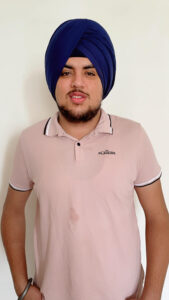Law Application in Medicine Exploring Antecedents and Practice

________________________________________________________________________________
This Blog is written by Anhadinder Singh from Amity Law School, Noida. Edited by Pranoy Singhla.
________________________________________________________________________________
INTRODUCTION
Medical science is expanding at an ever-increasing rate. Kidney transplants are now almost commonplace. In the past twelve years, more than one thousand have been manufactured. Liver and heart transplants are the current headlines; lungs may be next. Radioisotopes are used for diagnosis and treatment. The mechanism of human inheritance is increasingly becoming an open book. Cardiac catheterization is a daily activity and the treatment of malignant tumors is constantly increasing. Medical research has opened these and other new perspectives, and there are certainly better things just around the corner. Modern medicine is, in fact, a cutting edge business. At the same time, should legal science be called “art”? Also constantly finding new frontiers created by the continuous scientific and technological revolution. Nuclear matter is causing new legal problems. The supersonic transport planes will soon fly us from New York to Tel Aviv in three hours, and their sonic boom will definitely have an impact on the law. Electronic devices make our privacy less and less, which can eventually penetrate deep into people’s hearts. Modern medicine has created new legal problems. As the new order continues to develop, the law and lawyers will be forced to play an important role. In this article, we recommend studying one of these state-of-the-art drugs and laws to try to assess the potential for cooperation of forensic medicine to find useful solutions for the future. Although this type of interprofessional cooperation seems to be an obvious prerequisite for progress, it cannot be taken for granted, because there is much disharmony and mutual mistrust between the professions. Medical malpractice lawsuits in court, pain from expert medical witnesses in the stands, federal restrictions on the use of investigational drugs, and various other contacts with the law have shaped the image of the law and attorneys in the minds of many doctors. This is far from free. On the other hand, people in the legal profession are also well aware of some less attractive aspects of the medical profession, such as the strong aversion to “health insurance” by some doctors and the problem sometimes called “silent conspiracy.” This makes it very difficult to obtain the testimony of a professional expert in the medical malpractice lawsuit against the accused doctor. Due to these and other abrasive contacts between these two professions, despite thousands of good personal friendships and many Unfortunately, in the context of mutual admiration, each profession has a high degree of disrespect for other professions, which seriously hinders the necessary procedures for the law to influence medical practice. In a recent lecture, Dr. Charles G. Child III, Professor of Surgery and Dean of the Department of Surgery at the University of Michigan School of Medicine, dealt with this professional dichotomy with frankness and insight. Through psychological analysis of these two occupations and determining their differences, Dr. Child pointed out the basic differences in personality and education of the members of these two occupations. Then he observed: In my opinion, the adversarial approach of justice is probably the most important obstacle to the cooperation of law and medicine in negligent acts. This procedure is so unsuitable for reasonable medical purposes that its use not only causes hostility, but also reflects the conscious withdrawal of the medical community. In fact, few important issues in medicine are resolved through controversy and controversy. 3 Dr. Childe further compared the scientific method of medicine with the objective investigation of facts, and the law. His Socratic method clearly records things. It should be derived from the past by rational people. He said that the thinking processes of the two professions are so different that they are not easy to merge to solve specific problems. Finally, Dr. Child pointed out that the slowness and delay of judicial procedures keep doctors (whether the parties or witnesses) away from his patients, and even life itself will be negatively affected. In short, as we have done in this article, Dr. Child provides a lot of thinking for those who wish to explore the “Role of Law in Medical Progress”. Despite the difficulties raised by Dr. Child, we now continue to study more closely the various aspects of the relationship between law and medicine. Law and medicine meet in many fields. We confidently predict that the role of law will become more and more important in future medicine.
LEGAL AND MEDICAL FIELDS YOU MAY BE EXPOSED TO IN THE FUTURE
To complete our task of considering the role of law in the medicine of the future, our will first investigate a larger scenario to help us locate it. This will give you Before we begin to examine more closely the role of law in dealing with some of the issues we decided to examine more closely, an impression of the broad dimensions of the problem. Future areas of interaction between law and medicine will include at least areas described in the following fourteen paragraphs: (i) Psychiatry and law. The psychiatrist’s understanding of mental illness and its treatment is not compatible with the most primitive precepts of criminal law. The debate involved not only the various possible definitions of criminal responsibility, but also the procedures for the treatment of people with mental disabilities and the treatment granted to them are sufficient to justify the deprivation of their liberty in the absence of due process. With Psychiatry Improvements in technology, as more and more funds are directed to this area of need, and as the law adjusts its rather clumsy institutions to deal with the subtle problems of treating mental illness in an increasingly anxious society, the future field has unlimited potential for development. (2) Alcoholism. Alcoholism is known as the fourth largest health problem in the country, affecting approximately 6,000 people, many of whom can be very productive but are affected by forced alcohol use. The court began to find that chronic alcoholism is not a crime but a disease. 4 Physicians should be involved in making changes to the laws and establishing 5 centers for the treatment of alcoholism. (3) Drug offenders. The “promoters” are criminals, drug users may not be criminals, but people in need of medical assistance. The medical profession must be free to treat. `Law and medicine must cooperate to provide opportunities and means for effective treatment. 7 (4) Population control. This is a controversial issue. The Supreme Court provides protection against legislative interference to families who wish to practice birth control. The most difficult and urgent problem is how to control the population explosion within a certain range. Family planning and birth control councils and equipment appear to be only a small step, although religious pressure still hampers large-scale efforts in these areas. In the future, economic measures may also be used to inhibit reproduction.
ANTECEDENTS AND CONSEQUENCES OF MEDICAL STUDENTS
For many people, medical school is a stressful time. In fact, a systematic review of research on psychological distress among medical students showed that, compared to the general population, they suffer from high levels of depression and anxiety and increased psychological distress [1]. In this article, we consider the problems of medical students, focusing on moral issues, that is, when a person’s behavior is considered limited, it is caused by inconsistency between ethical / moral beliefs and one’s behavior. Emotional distress Restricted by the system or unequal power relations [24]. By emphasizing the concepts of professional dilemmas and moral decision making, we have studied the various dilemmas that students face, how they cope with these dilemmas, and any resulting moral dilemmas they experience. Finally, we provide suggestions on how medical educators working at the student, teacher, and organizational level can reduce or prevent students’ professional errors when faced with moral dilemmas, thereby reducing their moral dilemmas.
IMPLICATIONS FOR MEDICAL EDUCATION
Medical educators must consider how best to support students’ moral decisions when faced with professional dilemmas: whether to comply or resist mistakes. We believe that students need three levels of support: direct support for their learning, support for teacher development, and support for their institutions. In terms of direct support for student learning, medical students must understand their moral responsibilities through different ways of understanding professional standards and considering ethical issues [7]. Although large-scale conferences can further this goal, interactive group meetings with clinical counselors appear to develop students’ understanding of the ethical and professional complexities they are learning. In fact, when considering students’ understanding of professionalism, Wiggleton et al. Those who have experienced early patient contact and learned in small interactive groups of clinicians sharing personal experiences and discussing professional issues have been found to have a greater sense of professionalism than those who learn primarily in lecture-based courses. more complex and specific understanding. 33]. The latter students tend to focus on acting like a professional (eg, through the clothes they wear, the way they speak) rather than embodying a strong professional self [33]. In addition, some students in lecture-type learning courses commented on their learning at the end of the course and how they engaged in professionalization errors without realizing that they had moral problems. Finally, activities such as providing opportunities for students to share their professional dilemmas and sharing these activities with emotions [3436] and idealized role-play actions (ie, how they want them to act) can re-engage students with their professional values. and Act in your future. With regard to teacher development, medical educators need to ensure that clinical teachers keep pace with new professional policies and increase their awareness of their role as professional role models. Monrouxe and Rees [7] and Rees, Monrouxe, and McDonald [8] reported that it is useful to share narratives of students’ professional dilemmas with clinical teachers as part of formal teacher development to promote best practices. Finally, organizations must find ways to help employees and students report deficient behaviors. This combined approach supporting the medical generation as capable, autonomous and self-reflective ethical decision makers will allow them to choose the right actions for themselves, their profession and the benefit of patients.
REFERENCES
(1) https://core.ac.uk/download/pdf/191057514.pdf
(2) Dyrbye LN, Thomas MR, Shanafelt TD. Systematic review of depression, anxiety, and other indicators of psychological distress among US and Canadian medical students. Acad Med. 2006;81(4):354-373.
(3) Monrouxe LV, Rees CE, Dennis I, Wells SE. Professionalism dilemmas, moral distress and the healthcare student: insights from two online UK-wide questionnaire studies. BMJ Open. 2015;5(5).http://bmjopen.bmj.com/content/5/5/e007518.long.Accessed January 12, 2017.

